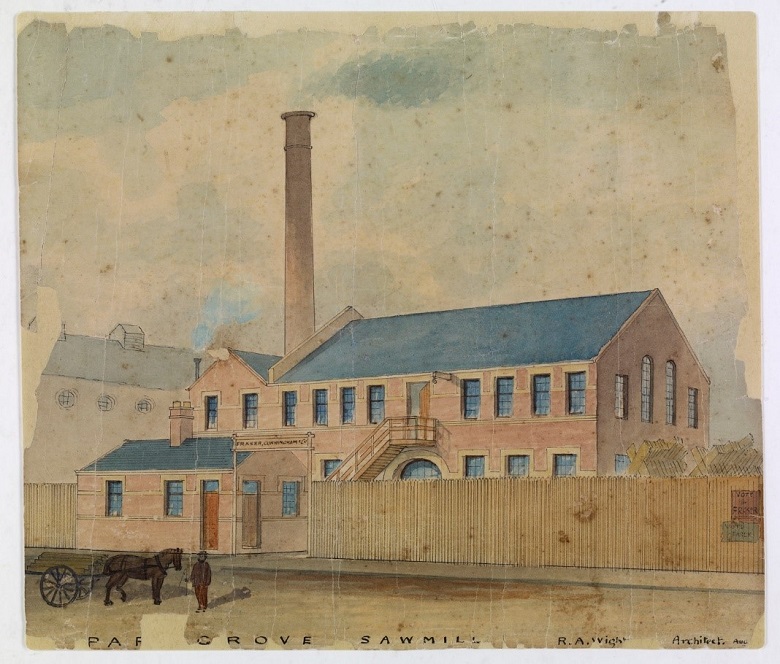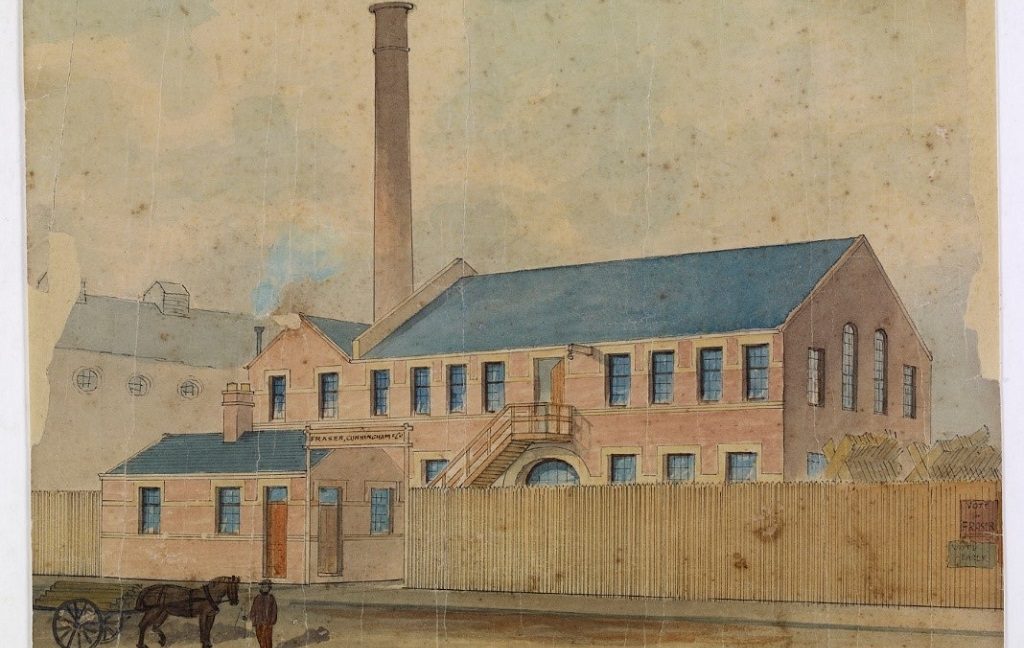As a trained paper conservator, I am experienced in many techniques and treatments that can improve the chemical and physical condition of paper objects.
These treatments aim to preserve the object for as long as possible whilst also enhancing its appearance and allowing for safe access.
These skills were certainly put to the test with the arrival of a very fragile watercolour at the Historic Environment Scotland archives. Here is its story!
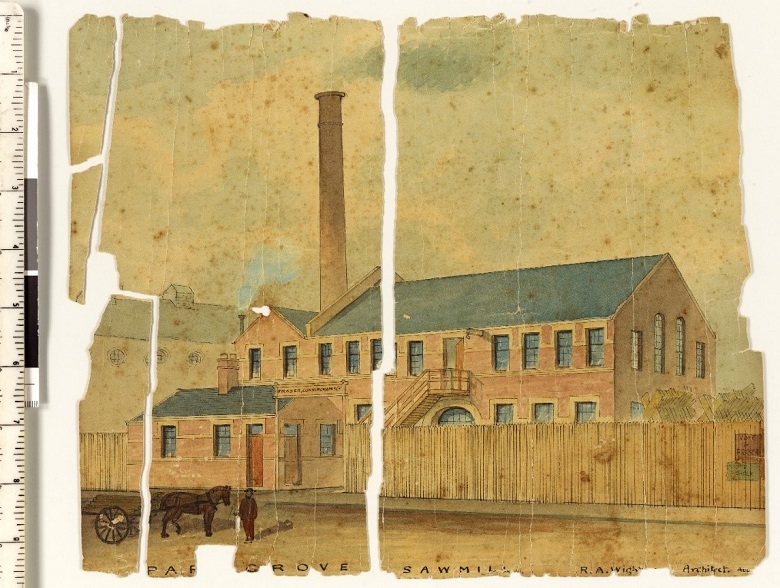
In the Beginning…
This small, but very important, painting was gifted to the Archive by a private donor, travelling all the way from Australia. The watercolour had obviously had a very eventful life. It’s condition when it arrived in our conservation studio certainly showed evidence of this!
It is thought to be by the architect Robert A. Wightman. Dating from the 19th century, it shows the now demolished Parkgrove Sawmill in Glasgow.
The painting predates the earliest photograph in our archives and is therefore a unique and significant record of the site.
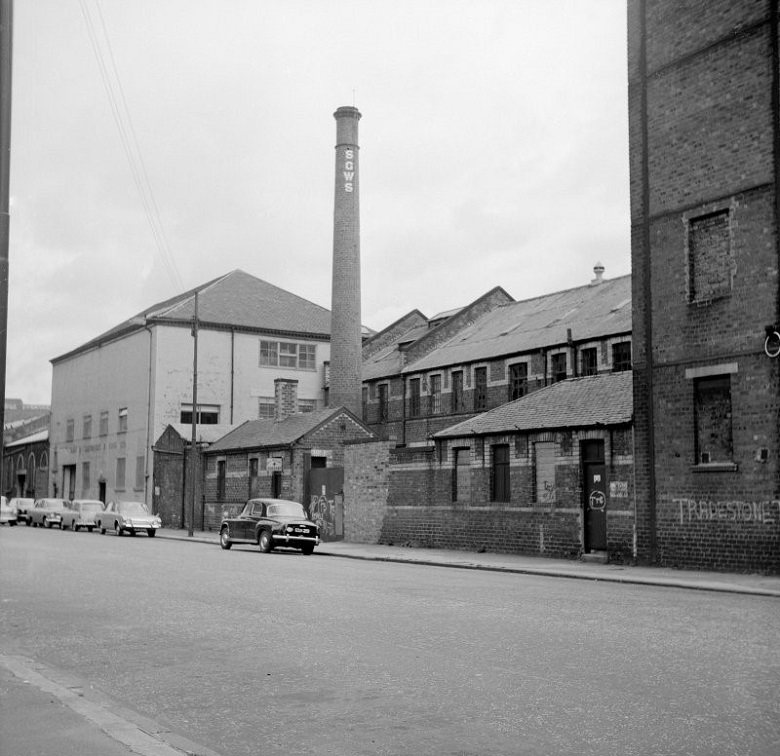
The earliest photo of the mill is from 1967 (Image © HES. Reproduced courtesy of J R Hume via Canmore)
The next chapter…
The painting was very spotty and discoloured as a result of exposure to light and having likely been stored in a damp environment.
It had also become extremely brittle and acidic through ageing. This, combined with being rolled and squashed over time, had the paper very creased and fragmented.
To improve the condition of the object, I recommended washing the watercolour.

After thoroughly testing the different pigments to ensure that they would not bleed when in contact with water, we washed it in purified water.
This reduced the appearance of any discolouration whilst also strengthening the paper. Next, we added an alkali solution to the water to neutralise any acidity present.
After washing, the painting looked much better and the paper much brighter and more flexible. But it was still in several parts!
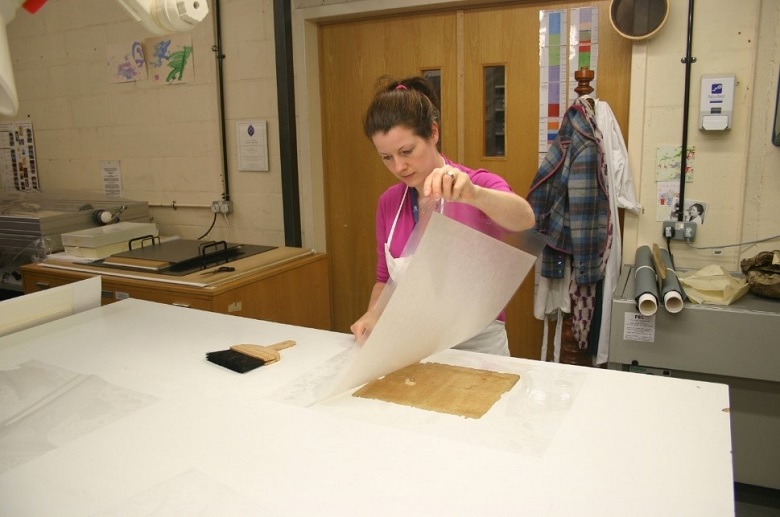
Repairing the tears
Therefore, the next stage was to repair the tears. I did this with a light-weight, but still very strong, Japanese tissue and wheat starch paste.
Once all the fragments were aligned and re-attached, the watercolour was then given an overall lining using a whole sheet of Japanese paper, providing additional support to a still fragile object.
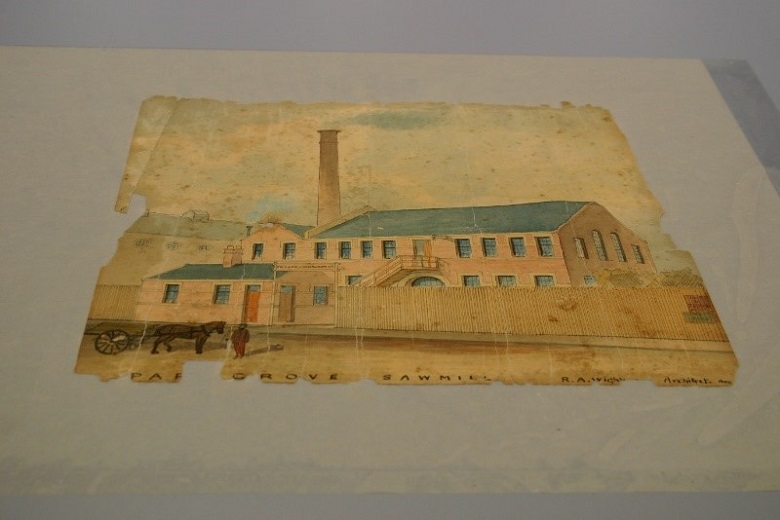
Although we had rejoined the various fragments, there were still areas of loss to the painting. Therefore, the last stage of the treatment was to fill these areas with toned repairs. This would make the painting stable and more aesthetically pleasing.
I toned a new paper, similar in weight and texture to the original paper support, with artist quality acrylic paints to be a sympathetic shade. Using a light box, I was able to cut this newly toned paper to the exact size of the lost areas. Then it was a case of filling in the blank areas!
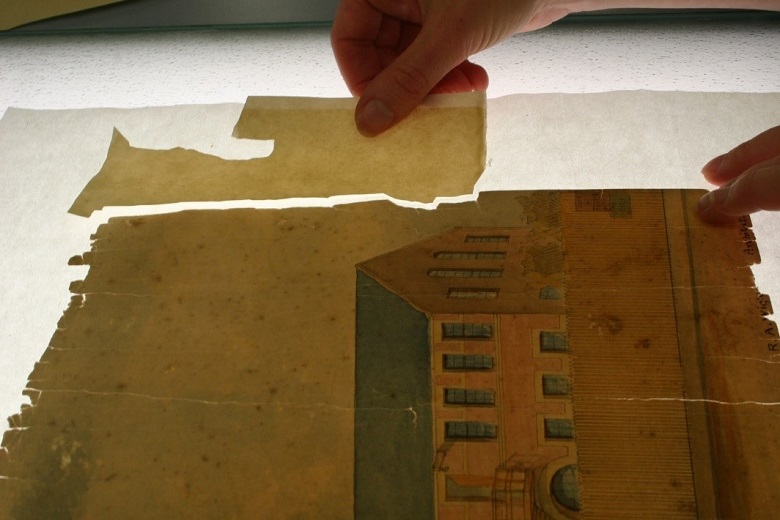
Working with a light box
And it lived happily ever after…
With the conservation complete, the painting is much more stable. It can now be accessed and consulted safely and enjoyed by future generations.
Following treatment, the painting was photographed by our digitisation team (see below). You can now find it in our archives on Canmore.
Quite a story for such a little painting!
